Coastal juniper: popular varieties, planting and care secrets
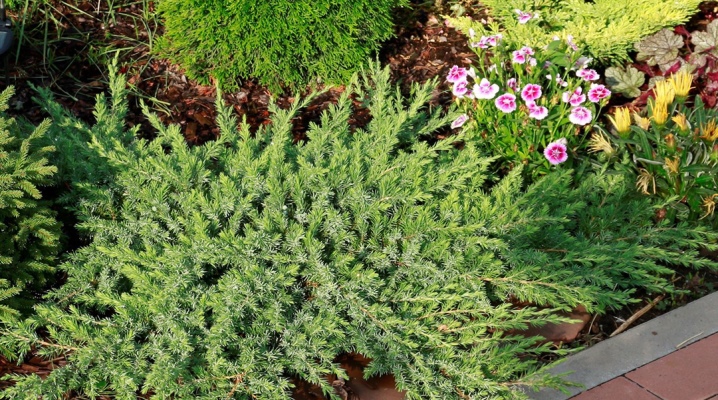
Juniper is a very popular crop that can grow both in its natural environment and in a summer cottage. There are many varieties of this plant, but today we will talk about the coastal juniper, which will not be an easy task to grow.
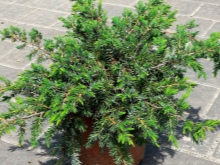
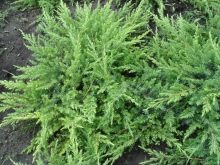
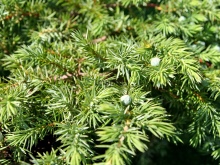
Description and features
In another way, coastal juniper is called conferta. It is a coniferous and very rare plant belonging to the cypress family. It is a shrub that spreads along the ground, forming real thickets. The branches of the shrub have a brownish tint, but the cones will be almost blue. The coniferous cover is green, but there are also varieties with a silvery sheen. In nature, it is especially common in Japan, but many species grow in some regions of Russia.
Coastal juniper is often used to decorate and plant a wide variety of areas: parks, squares, private households.
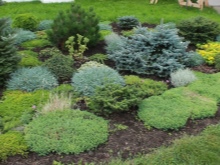
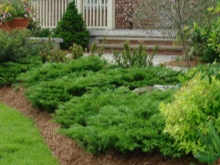
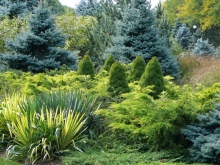
It manifests itself most vividly at the very beginning of June, when new branches begin to actively grow. Young juniper is planted on alpine hills, flower beds, terraces, balconies. Almost all types of plants can be matched to it, but it looks especially impressive with bright flowers and rare species of conifers.
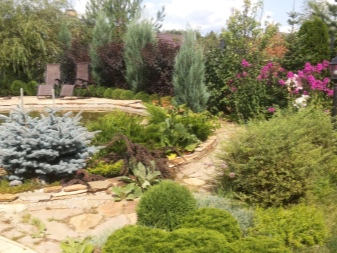
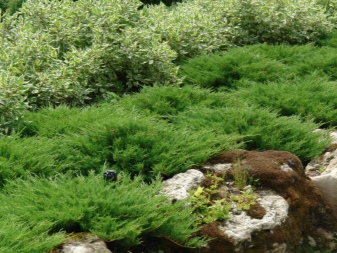
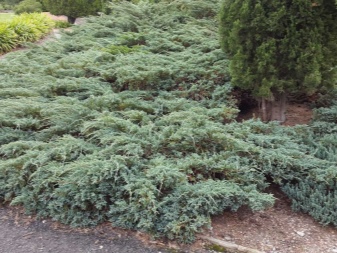
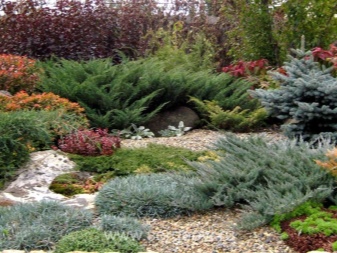
Diversity
There are not too many varieties of coastal juniper, but it is quite possible to choose a suitable one for planting. Let's consider the main characteristics of the most popular varieties.
- Golden Wings. Translated from English, this name means "golden wings". This name was given due to the fact that the tips of the branches are slightly raised, as if the culture is about to take off, and also some parts of the plant are colored golden. The diameter of the crown "Golden Wings" is about a meter, but the height of the shrub is quite small - only about 30 cm. An interesting feature of the variety is the two-color coniferous cover.
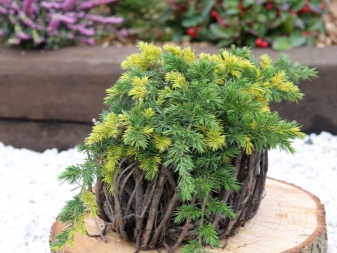

- "Hit". A sprawling, very thorny shrub that many gardeners have appreciated. Its interesting feature is the bright emerald needles, which have a light stripe, reminiscent of light gray hair. Due to this, "Shlyager" is most often used for decoration. Such a variety must be placed in sunny places, otherwise its decorative effect will be lost.
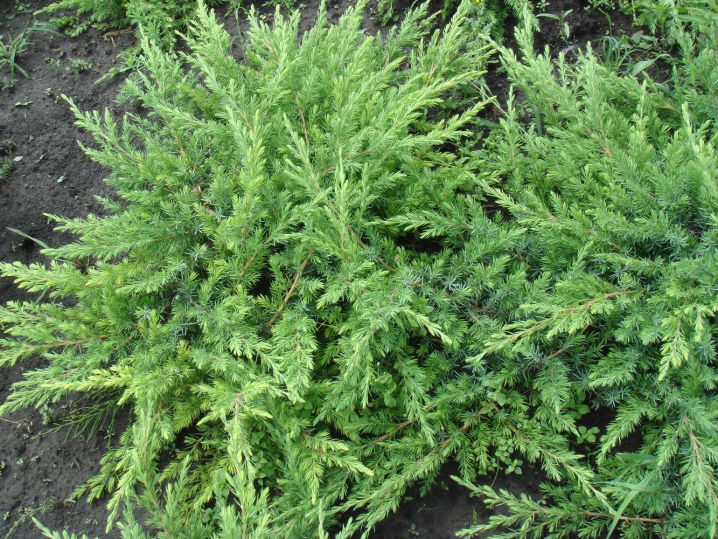
- Blue Pacific. This variety belongs to the slowly growing, but the diameter of the crown in adulthood reaches almost two meters. The crown is dense, spreading, green needles, have a light blue tint. If you plant several junipers at once, they will constantly delight you with their aroma, this is one of the most smelling varieties. It perfectly tolerates the cold season.
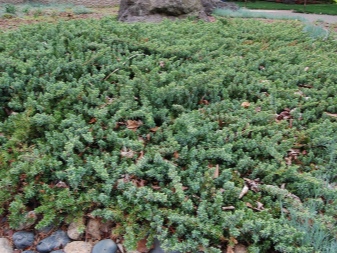
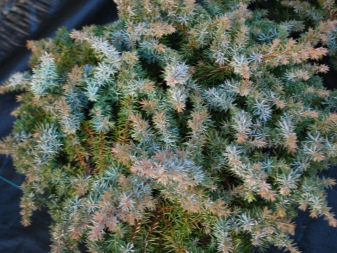
- Silver Mist. This variety means "silver haze, fog". It was bred in Japan and has an unusual silvery needles. Compared to other varieties, this one is quite compact - from 20 cm in height and up to 90 cm in diameter. Creeping shoots, covered with round fruits of dark shades during fruiting.
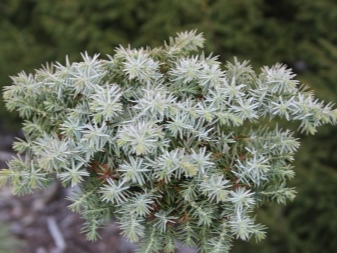
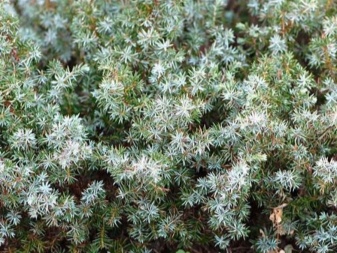
- "Emerald Sea" ("emerald sea"). DThis variety has a spreading and wide crown, reaching 2.5 meters. The needles are very beautiful, emerald green, shimmering blue. The Emerald Sea copes well with frost, it can grow on any type of soil. The only thing to avoid is waterlogging.
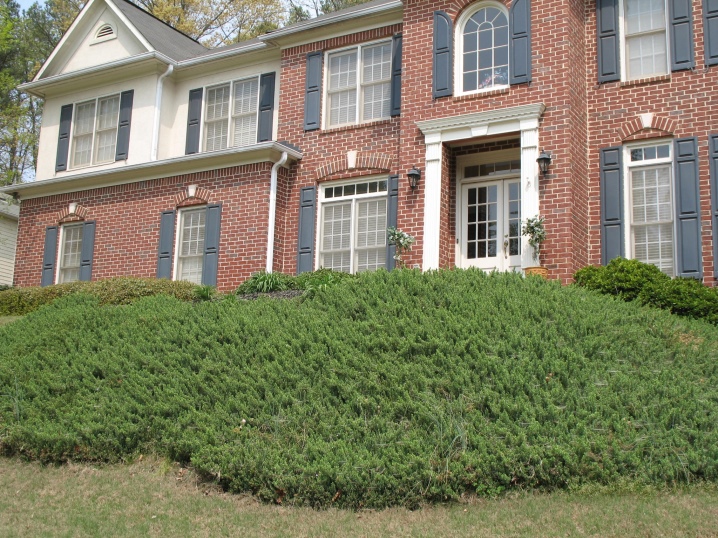
How to plant?
Coastal juniper is planted only in sunny areas, but if this is not freely available, then light partial shade will do.
In a too dark place, the plant will not develop. The culture is not too demanding on the soil, but it is best to prefer light, oxygen-rich sandy loam soil.
In addition, there should be no strong drafts on the site. It is also worth noting that the juniper should not be planted near berries and fruit trees, since such a plant contains a pathogenic fungal infection in its roots, which does not harm itself, but can have a bad effect on the surrounding crops.
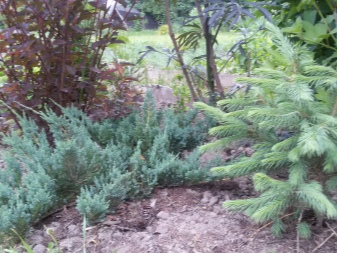
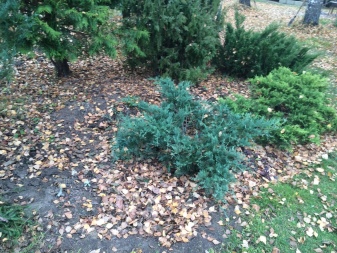
Having decided on the planting site, you can pick up a seedling. Since coastal juniper is a rare and not well-known crop, you need to acquire it in a good nursery, and preferably in a container. Before buying, the seedling is inspected for rot and damage. All such moments are unacceptable. When readyThe final stages are over, you can start planting a juniper, which looks like this:
- planting holes are dug at a distance of at least two meters from each other, the diameter of each should be twice the size of the earthen coma;
- a 20-centimeter layer of drainage is poured onto the bottom of the pit; ordinary broken brick, as well as large pebbles, are well suited here;
- the seedling is watered in a container, and then removed and positioned clearly in the center of the hole;
- the culture is covered with earth, leaving the root collar visible;
- the seedling is tied to a peg driven in immediately after backfilling the earth, and then watered well;
- the next day, mulch is necessarily laid out in the near-trunk circle.
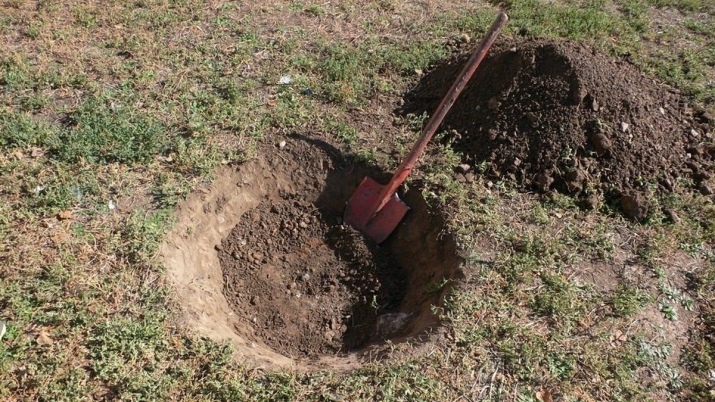
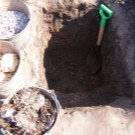
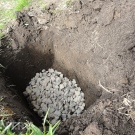
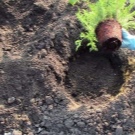
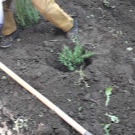
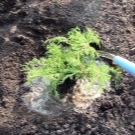
How to care?
When the plant is first planted, it will need a lot of moisture. Therefore, water the juniper as the soil dries up, but avoid stagnant water. When a week has passed, the plant will adapt and it will no longer need so much liquid. The grown culture is watered several times per season, more often it is not worth it. However, sprinkling will be a mandatory stage of care, especially in places with an arid climate.
After watering, the soil around the juniper must be loosened. This will help saturate the soil with oxygen. Loosening is not too deep so as not to damage the roots.
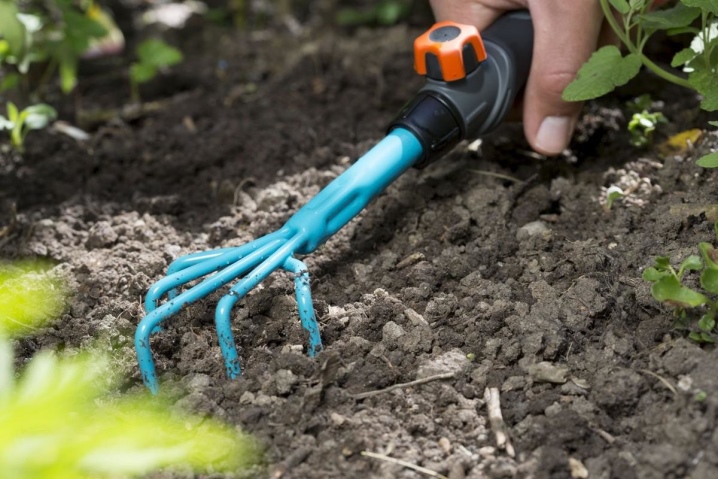
In addition, mulching is very important - it is thanks to it that the culture does not need frequent watering (mulch holds moisture well). They are usually mulched with sawdust or chips.
As for fertilizers, only young plants need them; in the future, the juniper will not need additional feeding. Fertilize the culture in the spring, when active growth begins. For feeding, nitroammofoska is well suited, as well as fertilizers for conifers. The amount of the required drug is always indicated in the instructions.

Pruning is a routine required by many plants, which is not the case with junipers. Since this culture grows very slowly, it makes sense to carry out only sanitary pruning, which involves the removal of dried and diseased branches. Decorative, formative pruning is almost never used, although it does happen. If there is a desire to give the shrubs a shape, you can cut off a third of the plant, after which the wounds are filled with garden pitch, and the culture is fed. The coastal juniper is a plant that is very resistant to cold. Nevertheless, in regions with severe frosts, it must certainly be covered. All plants are mulched with a 10-centimeter layer of peat, and young seedlings are additionally covered with spruce branches.
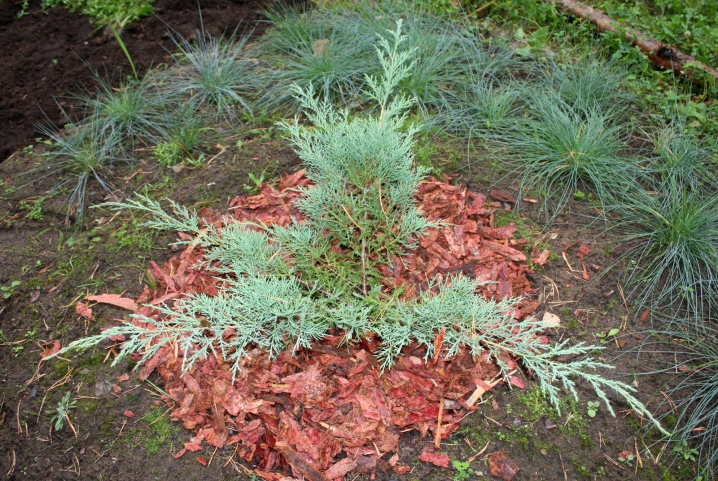
Common diseases
Like any other crop, the coastal juniper is not immune from a variety of diseases and pests. Very often, juniper needles turn yellow. In summer cottages, this is due to animals that can mark the territory, causing the accumulation of salt in the soil.
In urban conditions, the needles turn yellow due to the gas pollution of the air.In addition, excessive watering can also cause yellow foliage.
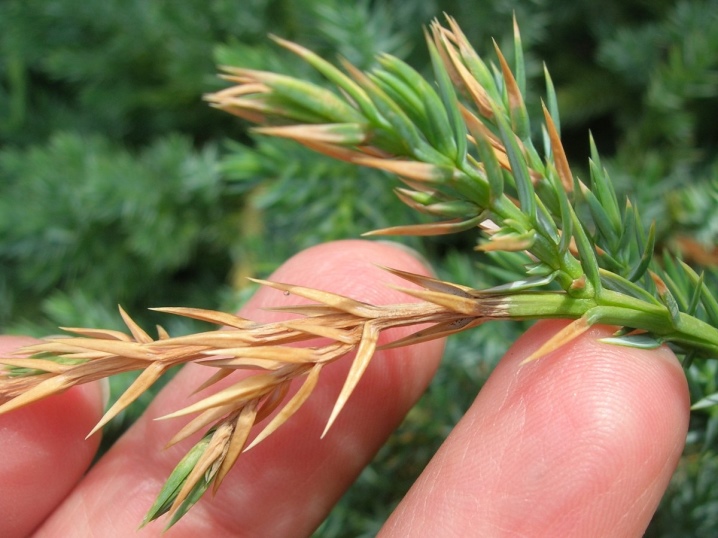
One of the most pernicious and common diseases is rust. If there are fruit trees or hawthorn nearby, then this is a double threat, since it is on these crops that fungal spores mature, which will subsequently be transferred to the juniper by the wind. You can understand that the plant is sick by the small red growths that grow quickly after the rain. The only way to fight is to secure the above plants from each other. The affected needles should be removed, and the plant should be fed with immunostimulants.

Another dangerous disease is shute. It is manifested by the browning of the needles, the deciduous cover is not renewed. Fungal spores do not die in winter, they are especially dangerous for weak plants. To avoid illness, plant junipers in sunny areas, do not allow thickening.

If the disease nevertheless overcomes, strong local fungicides are used.
Coastal juniper pests can be divided into two groups.
Sucking
In this group, aphids are especially common, which causes sticking and twisting of shoots. You can stop its spread by getting rid of the ants. Pruning and spraying with soapy water also helps. The second dangerous pest will be the juniper scale insect, which ensures the drying of the needles. If the insect has just begun to parasitize, you can put straw or caterpillar glue traps on the tree in the spring to stop the pest from advancing. In advanced cases, insecticides will be needed.
Pine needles
From the group of needle-gnawing parasites, the juniper sawfly can be distinguished. Its larvae gnaw through the needles, which causes them to die off. They fight insects by digging up the trunk circle, thereby destroying the nests. And also insecticides will always come to the rescue. The same method is used to fight the pine moth, which severely damages the shoots, sucking out all the juices from them.
In order to prevent all these diseases, it is enough for the juniper to provide the following good care:
- water on time and correctly, and then loosen;
- be sure to mulch;
- do not plant so that the shoots are intertwined;
- do not experiment with feeding;
- do not plant in shady areas.
See below for an overview of the coastal juniper.



































































The comment was sent successfully.